When Katherine Ferland began looking for a college, she had offers to stay near her home in Montreal, with fellow French-speaking students. But then came the lure of Fort Kent, Maine.
“Life is wonderful here,” said Ferland, who is now a junior at the University of Maine at Fort Kent. “People are really nice here … and Fort Kent has a great soccer program.”
UMFK won its fourth national women’s soccer title in five years this month. At the same time, the men’s soccer team reached the national title game. The women’s volleyball team just missed out on reaching the national tournament.
UMFK has become a national power in small-college athletics, as well as a magnet for student-athletes from across the country and around the globe.
Only 11 of its 82 student-athletes are from Maine. Forty-one come from other countries, including 17 from Canada and eight from Jamaica. Twenty-four are Californians.
UMFK has used an aggressive strategy to land prime athletes and out-of-state students, providing success and boosting its enrollment.
“Everyone wins,” said Wilson Hess, the school’s president.
Enrollment has jumped by 10 percent this school year, to 1,327 students. Among the other five University of Maine System schools, only the University of Maine in Orono (0.1 percent) has seen an increase.
UMFK has 136 out-of-state students. Slightly more than half are athletes.
“We are always thinking, ‘Where else can we go?’ ” said women’s soccer coach and chief athletic recruiter Lucas Levesque.
One place he and athletic director Bill Ashby have targeted is California.
A California-to-Fort Kent pipeline?
Tiara Nolen is from Merced, California, where temperatures were in the 70s last week. A transfer from Merced College, Nolen enrolled this fall at the university in Fort Kent, where the high temperatures have been in the teens the past few days.
“I’m a little nervous,” Nolen said earlier this fall. “I’ve heard it’s pretty brutal.”
So the natural question arises: Why leave California for Fort Kent?
“Volleyball and the nursing program,” Nolen said.
Her mother, Liz Nolen-Wiggins, said cost played into the decision. “It’s pretty affordable. We were really excited about that.”
GENUINE INTEREST IN FOSTERING ATHLETES
The number of out-of-state student-athletes could increase even more because of a pilot tuition program launched this fall at both UMFK and the University of Maine at Presque Isle. Tuition, including books, housing and expenses, was slashed 40 percent to $20,537 for out-of-state students.
“I would have been paying more to go to (California State) Chico,” said senior volleyball player Jessekah McCorkle of Bayliss, California.
In-state tuition and all expenses at California State at Chico is $22,414. Plus, McCorkle would likely not have been on Cal State-Chico’s team.
“And playing volleyball is a really big deal,” McCorkle said.
That sentiment is what UMFK’s athletic department is counting on when it recruits in certain areas.
“We do quite of bit of research of markets,” said Ashby, who also coaches the men’s soccer team. “California raised the prices of their senior colleges, and our prices went down. And with over 100 junior colleges, there’s a bottleneck.”
What Ashby and Levesque found in California are student-athletes who needed to look elsewhere if they were going to find the perfect combination: a school where they could be accepted, with the program they wanted, an affordable tuition and, most especially for some, an opportunity to play sports.
“Academically, they can transfer (to a California State school), but athletically it is difficult,” said Wendy Bates, women’s basketball coach at Monterey Peninsula College, a two-year school in California that’s provided UMFK with three current basketball players and a soccer player.
Bates learned about UMFK in 2010 when she was helping a basketball player from another junior college look for a four-year school.
“I reached out to several hundred schools,” Bates said. “I think it was (UMFK’s) outreach and their ability to come out and actually meet the kids face-to-face.
“I have felt much more comfortable (recommending UMFK) in the following years.
“It’s a good fit – a small campus, and they have a genuine interest in fostering (athletes) to get their degree. I felt good about the competition there and kids being able to have some success at that level.”
Jessany Munoz, a senior volleyball player from Yreka, California, was adventurous enough to leave the West Coast for Fort Kent.
“I’m not a real homebody,” Munoz said. “I was more concerned about playing time and I’ve had plenty of that here.
“The thing with California is that I’m 5-foot-2. The chances of me playing anywhere were very low. And the tuition is very high. Going to Fort Kent, with my height and my bank account, really worked out well.”
MONEY FROM OUT OF STATE
Munoz, like many of the out-of-state student-athletes, comes from a junior college. Some universities don’t recruit from junior colleges because they only get the students for two years.
“Our mentality is there are high quality student-athletes that fly under the radar because some schools don’t want (junior college transfers),” Levesque said.
And for the student-athlete, two years in Fort Kent may seem more bearable than four.
“It’s a selling point,” Levesque said. “If you’re here and you don’t enjoy the winters, it’s only two winters – it’s worth the experience and worth the investment.”
Besides California, UMFK has targeted Canada.
“Montreal is under-recruited,” Levesque said. “The women’s soccer there is phenomenal.”
And UMFK routinely looks to Jamaica. Eight Jamaicans play soccer for the Bengals (seven men and one woman).
“I’ve been going to Jamaica for the past 10 to 12 years. Built up contacts,” Ashby said.
Those contacts reach throughout the country, with not only other international students who attended American junior colleges, but also Americans from states as far south as Florida.
But only 11 from Maine.
“We’ve recruited hard in the state of Maine, and it hasn’t beared much fruit,” Ashby said.
And even if UMFK could attract Maine high school athletes, the pool of Maine high school graduates is shrinking.
According to the Maine Department of Education, 12,793 students graduated from Maine public high schools and academies in 2013, a drop of 11 percent in the past five years. And nearly half of those graduates are coming from Cumberland and York counties – quite a drive from Fort Kent.
“Maine kids are hard to get. They say, ‘If I’m going to drive five hours, I’m going south,’ ” Ashby said.
With fewer high school graduates in Maine, the University of Maine System began the pilot programs at Fort Kent and Presque Isle, reducing tuition for out-of-state students.
“We want to maintain enrollment,” said Hess, the UMFK president. “Bringing more outside students in is like selling exports overseas – it brings in money from out of state.
“It does make a difference on campus to have students from different cultures.”
Hess likened his athletic program to the University of Maine men’s hockey team, which is composed mainly of out-of-state players who bring recognition to the campus.
“We’re on a different scale, but it’s the same thing,” he said. “It promotes a sense of pride on campus, creates a general more positive atmosphere.”
COMPARING FORT KENT, PRESQUE ISLE
At UMPI, the reduced out-of-state tuition has not yet produced results – this year’s out-of-state enrollment is actually 3.5 percent (54 students) smaller than last year.
Of UMPI’s 115 student-athletes, 93 are from Maine, and 22 from out-of-state.
Owls athletic director and ski coach Paul Stone said the reduced tuition did attract “a handful of kids. We hope to get more out-of-state students. I think it will help us.”
Comparing the athletic departments of UMFK and UMPI is an apples-and-oranges contrast.
Most colleges compete in the National Collegiate Athletic Association at the Division I, II or III level, the latter for smaller schools offering no athletic scholarships. The NCAA requires its members to offer a minimum number of athletic teams (the minimum is 12 for Division III). There are 444 schools in NCAA Division III.
UMFK is a member of the U.S. Collegiate Athletic Association, or USCAA, which has 81 schools, including two-year schools (which UMFK does not compete against).
The Bengals have only five sports teams – volleyball, men’s and women’s soccer, men’s and women’s basketball – and can offer athletic scholarships.
UMFK’s athletic budget is $686,000, which includes $174,000 for scholarships, most of which go to international student-athletes who do not qualify for financial aid or loans. Levesque said the largest athletic scholarship anyone receives is about $5,000.
UMPI, which competes in both NCAA Division III and the USCAA, has a budget of $809,000, but that is spread over 12 teams – volleyball, men’s golf, baseball, softball and teams for both genders in cross country, soccer, basketball and Nordic skiing. It cannot offer athletic scholarships.
“Fort Kent can focus more of their resources on those (five) teams,” Stone said. “We have 12 sports, required by the NCAA. We are not able to support teams the way we’d like.”
Stone also said UMFK’s ability to offer scholarships helps its success.
The scholarships and the recruiting effort contribute.
Justin Soontiens, a junior from London, Ontario, heard from a friend about the Fort Kent school.
“I contacted the coach and what impressed me is that (Ashby) made the effort to come down and watch me play,” Soontiens said.
“I visited and it was everything my friend said, and more. And because of the scholarship, it’s as affordable as anywhere else.”
A WINNING FORMULA
The Bengals have enjoyed victory, especially on the soccer field. The men’s team is 162-12-6 in nine seasons under Ashby. The Bengals won the 2010 USCAA national title and have finished second the past two years. The women are 164-33-6 in 11 seasons under Levesque, with four national titles (2010, ’11, ’13 and ’14).
UMFK plays a mix of USCAA and NCAA schools on its schedule. The volleyball team finished 23-5, which included wins over Saint Joseph’s, Husson and Maine Maritime (twice).
The Bengals volleyball team was composed of seven Californians, one player from Uniondale, New York, who is also a basketball player, and a coach with no volleyball experience.
“I’d never been to a match. I knew nothing about the sport,” said Bengals coach Tom Bird.
Bird came to UMFK this year as the school’s new men’s basketball coach. But the Bengals volleyball coach unexpectedly left the program before the season, and Bird was asked to take over.
“The (players) taught me the game and I provided them structure,” said Bird, who found volleyball drills on the Internet.
Some of the players were skeptical at first, “but it’s been a blessing,” said Munoz, one of the seniors. “It’s refreshing to have a coach with fresh eyes.”
“He motivates us,” Nolen said. “Volleyball is such a mental game and he helps get us composed.”
And UMFK has helped Nolen keep playing the game she loves, while studying to be a nurse. If she stayed in California, she would likely not be playing, and there is at least a two-year wait to get into the nursing programs there.
Now Nolen and her fellow Californians are getting ready for winter. It’s a trade-off they have accepted: Withstand the arctic blasts; in turn, keep playing sports and get a degree.
Send questions/comments to the editors.


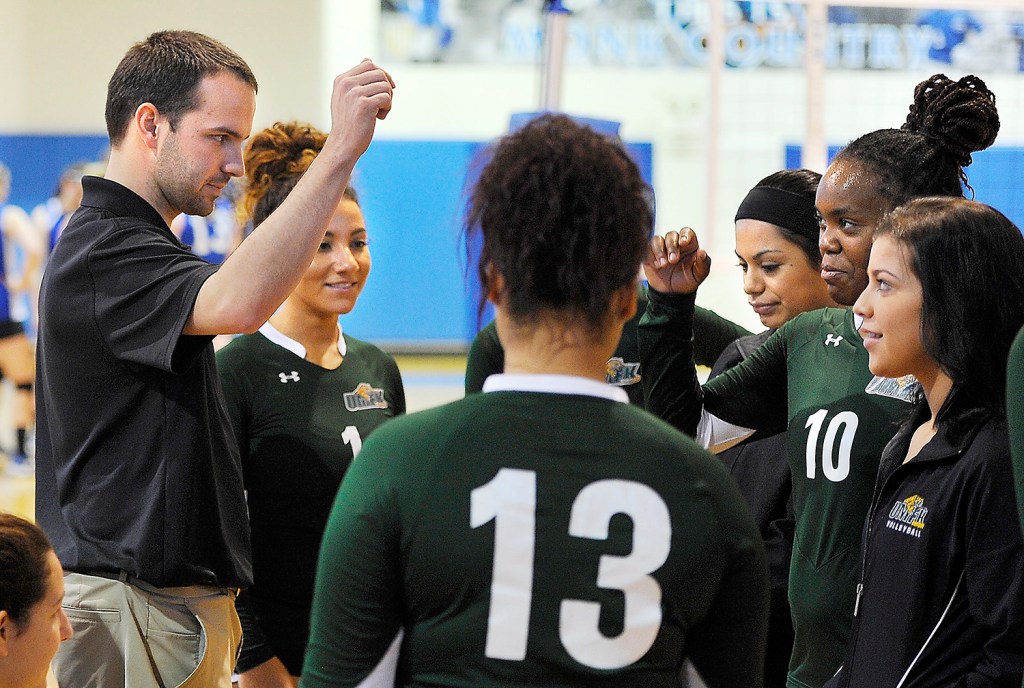
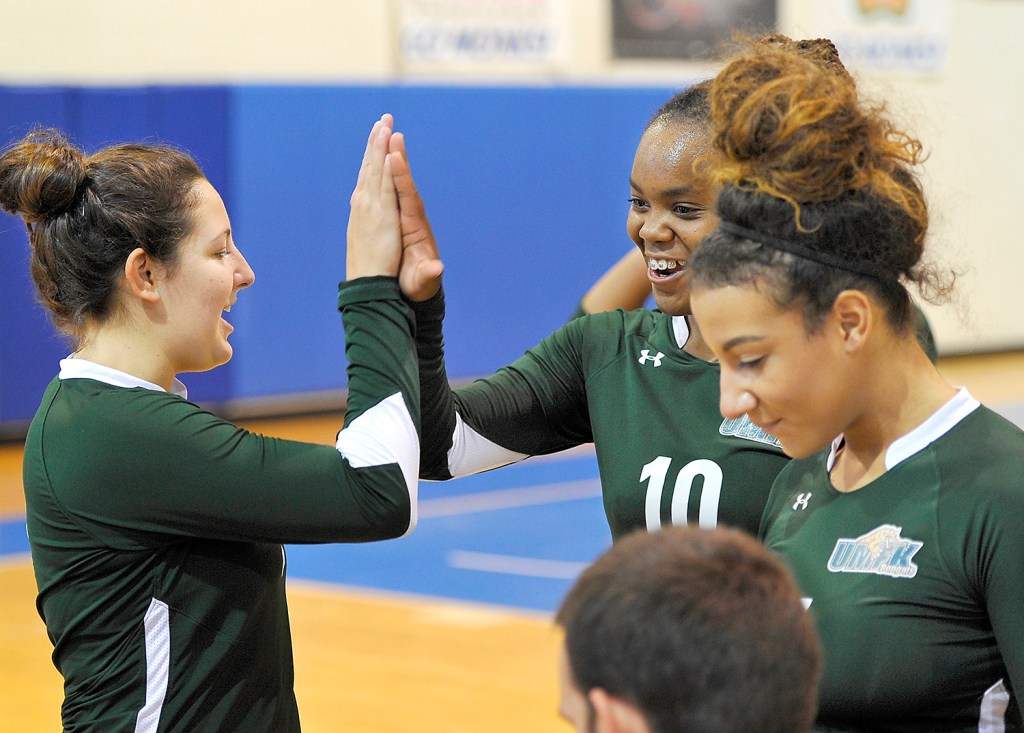
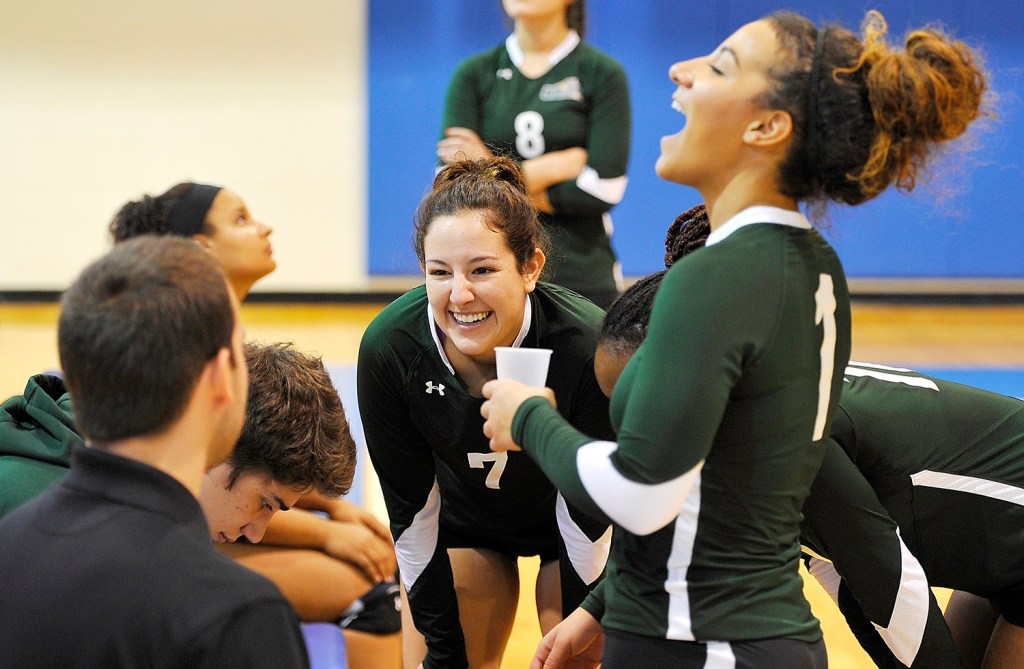
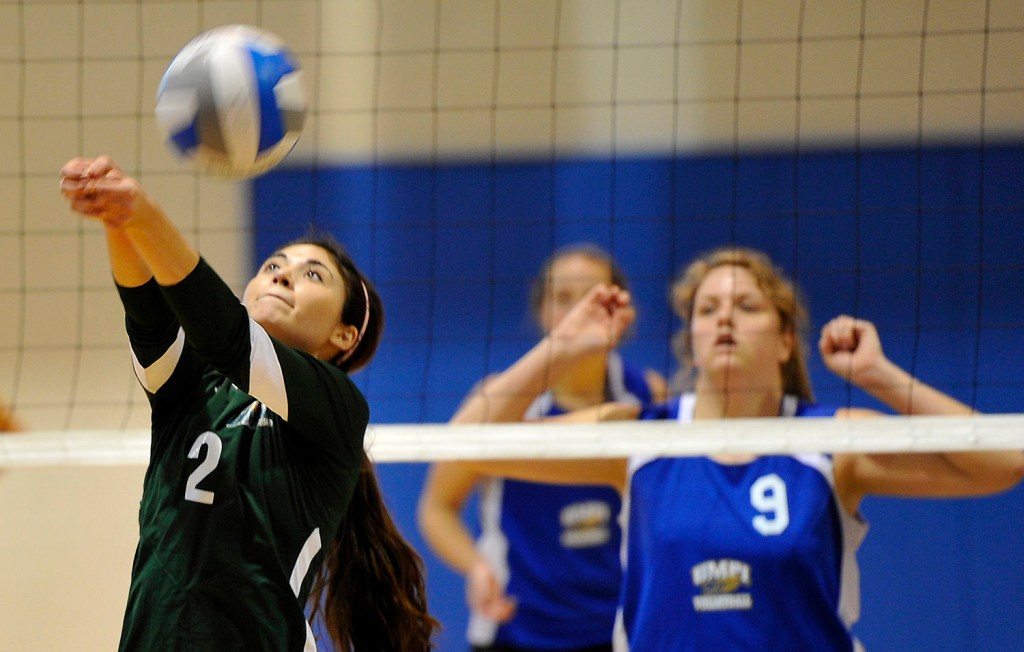
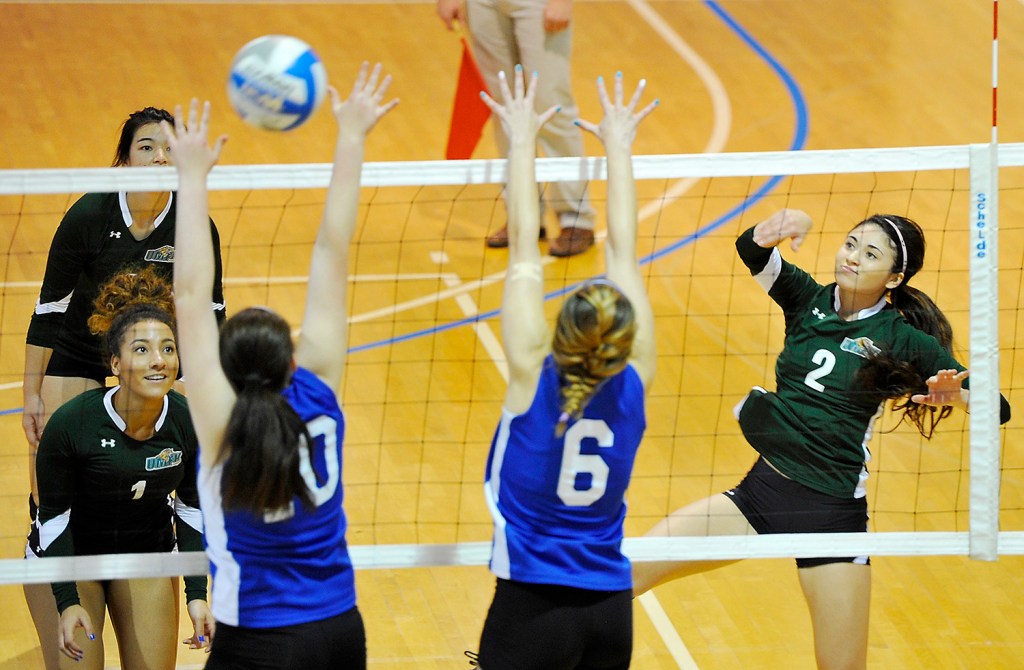
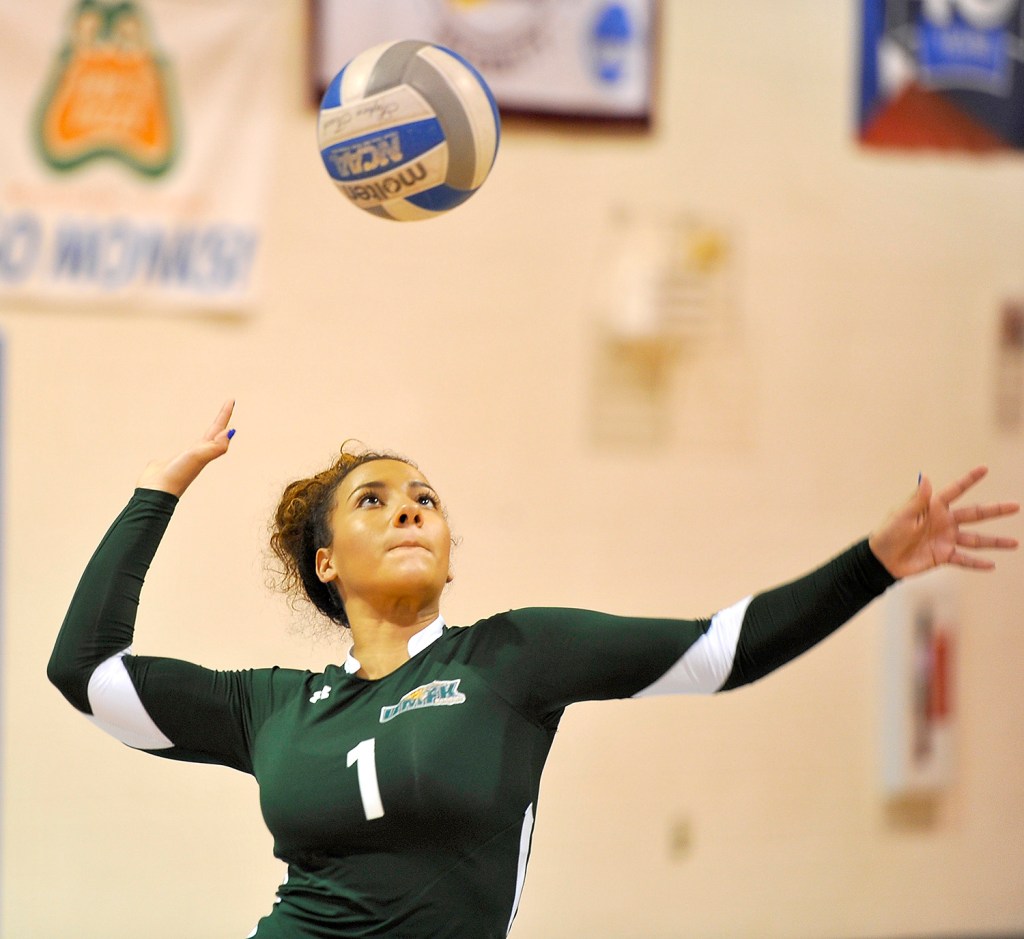
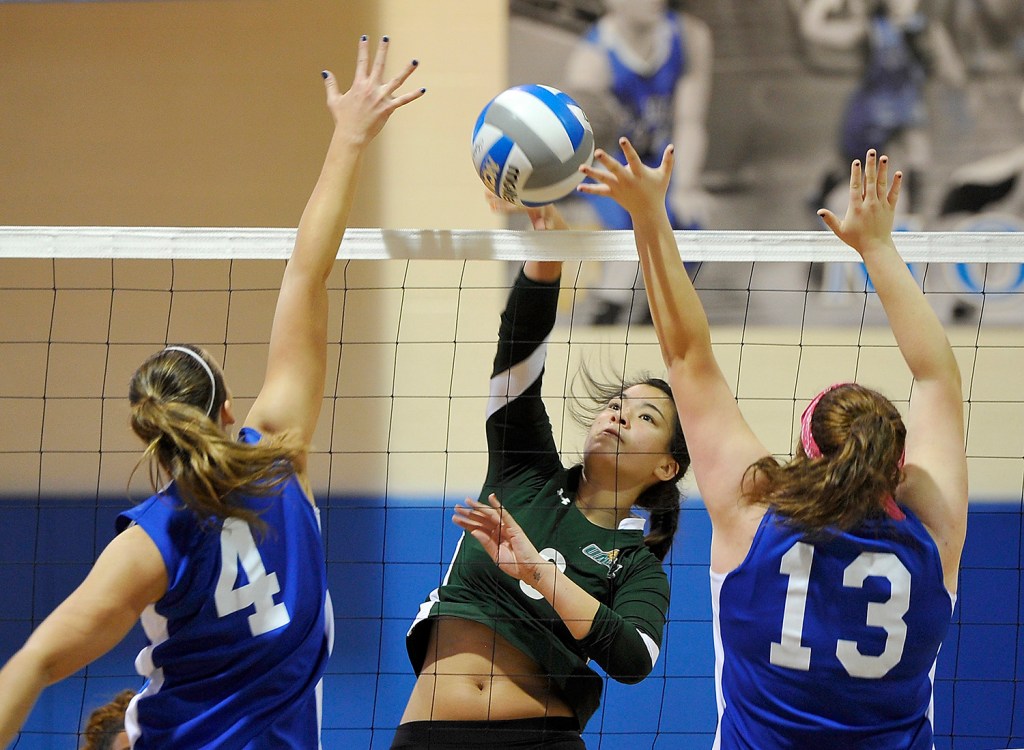
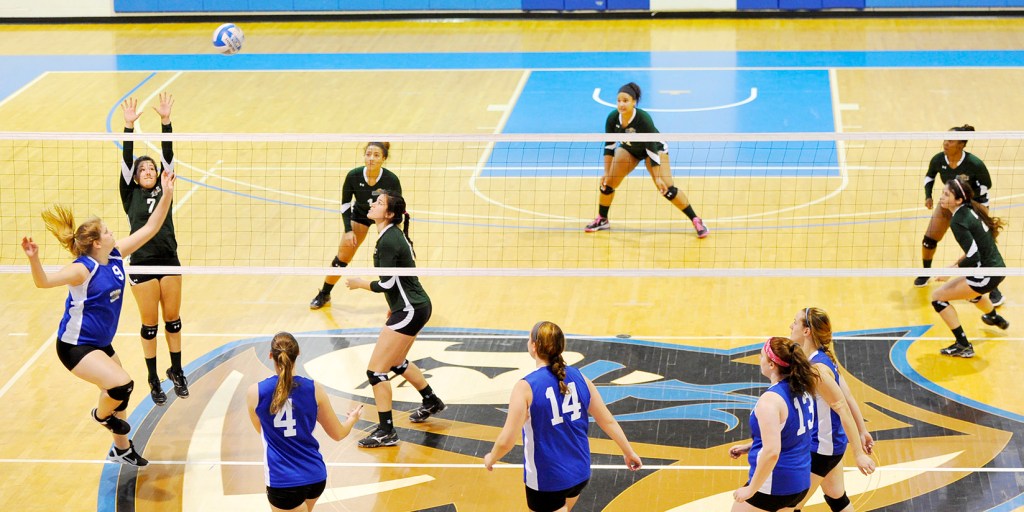
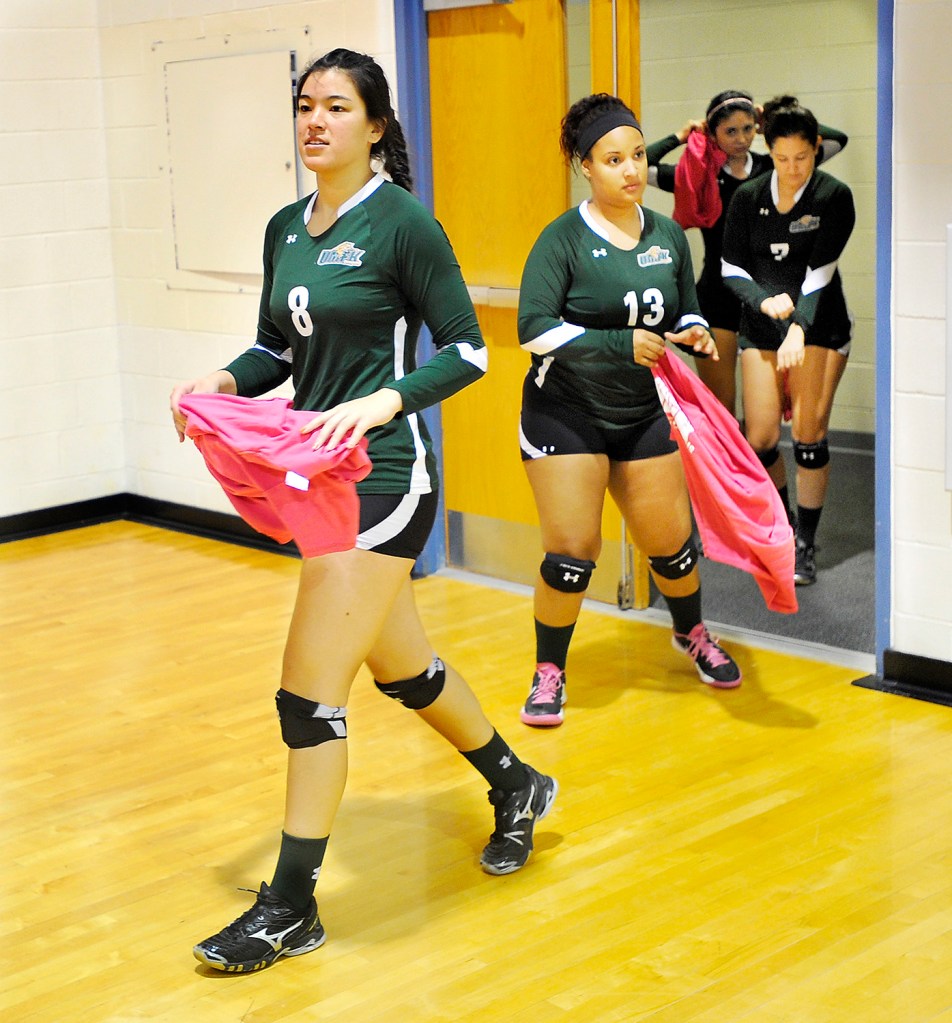
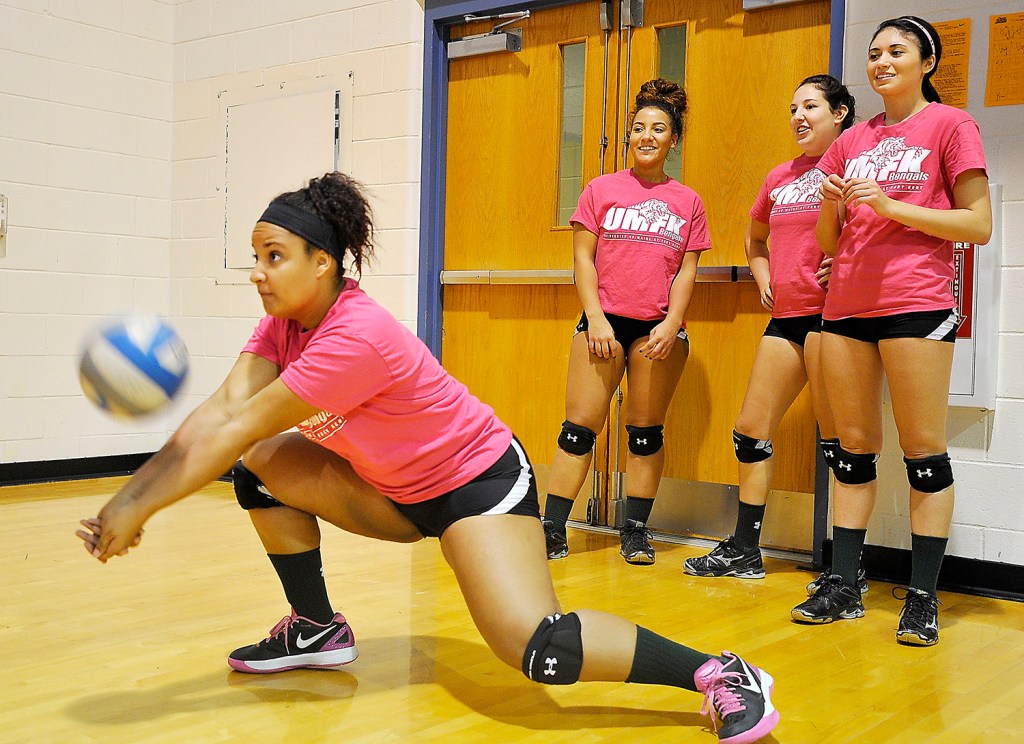
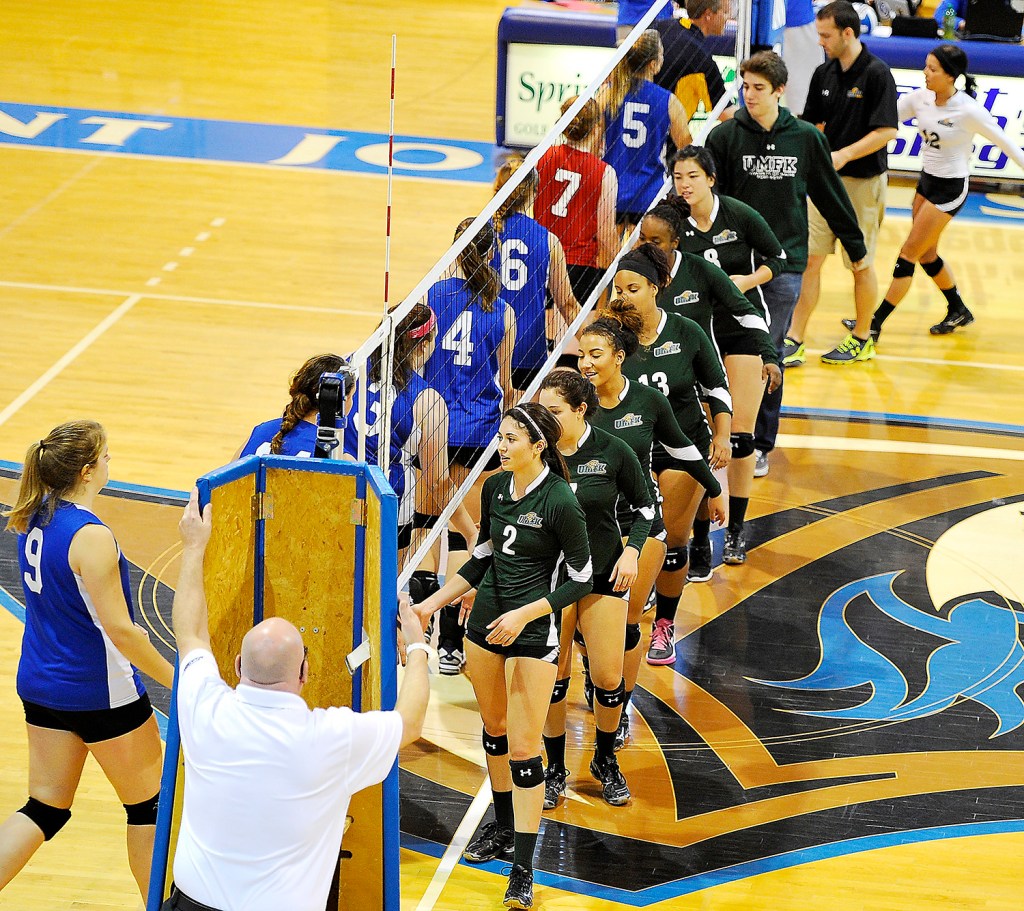

Success. Please wait for the page to reload. If the page does not reload within 5 seconds, please refresh the page.
Enter your email and password to access comments.
Hi, to comment on stories you must . This profile is in addition to your subscription and website login.
Already have a commenting profile? .
Invalid username/password.
Please check your email to confirm and complete your registration.
Only subscribers are eligible to post comments. Please subscribe or login first for digital access. Here’s why.
Use the form below to reset your password. When you've submitted your account email, we will send an email with a reset code.